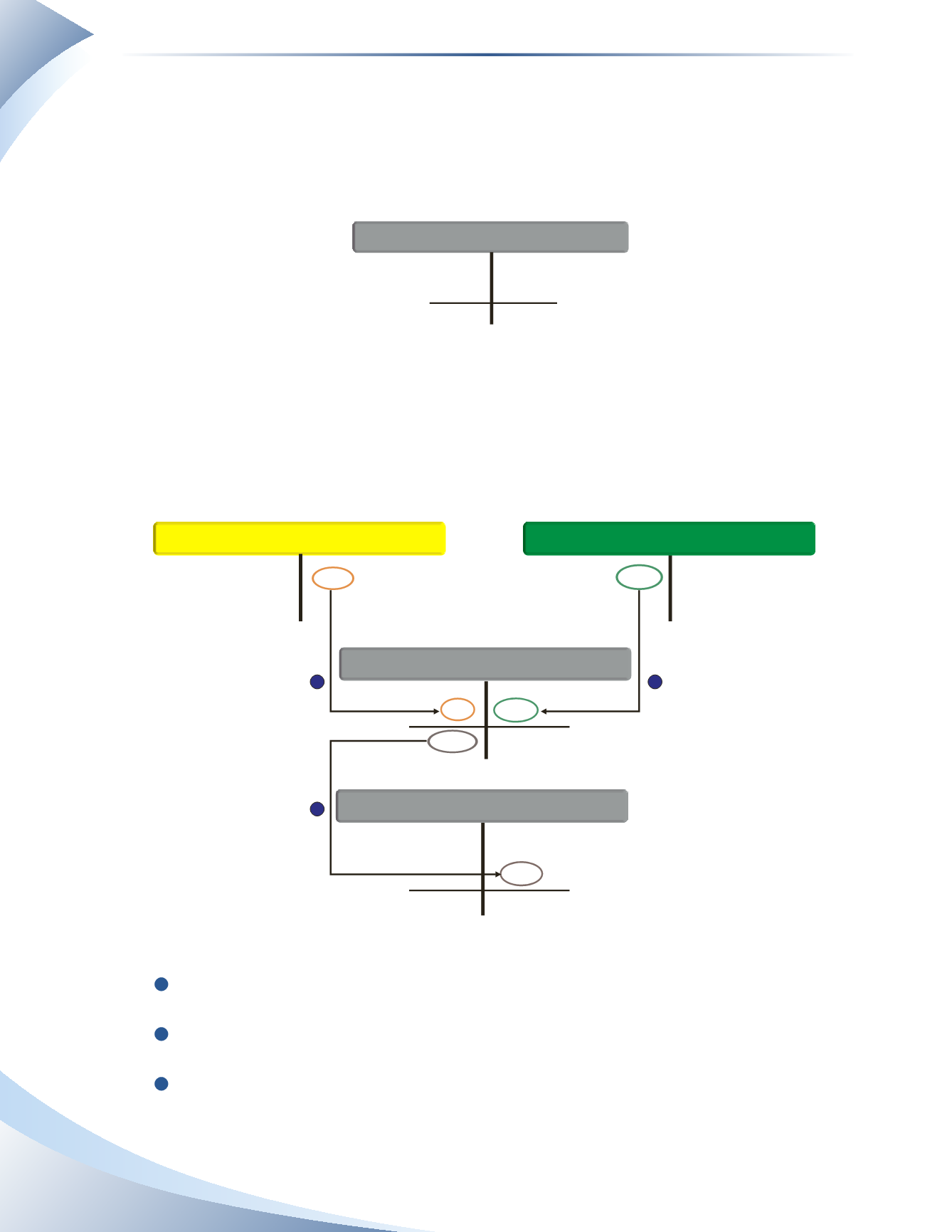
Chapter 6
The Accounting Cycle: Statements and Closing Entries
144
Net Result
Owner’s capital has increased by the total revenue and decreased by the total expenses and owner’s
drawings. Figure 6.15 shows the new balance is $11,475. This is the same figure shown as the
ending value on the statement of owner’s equity from Figure 6.5.
+
PARISH, CAPITAL
DECREASE (DR)
INCREASE (CR)
-
10,300 Current balance
11,475 Ending balance
Expenses 1,325
Owner’s Drawings 2,000
4,500 Revenue
________________
Figure 6.15
Income Summary Method: Close Using the Income Summary Account
Instead of debiting and crediting owner’s capital directly, it is common to use a temporary holding
account called
income summary
to close the revenue and expense accounts. Using our T-account
example, Figure 6.16 shows how the income summary account is used.
+
-
250
250
1,250
1,500
Current balance 250
+
+
INCOME SUMMARY
SERVICE REVENUE
DECREASE (DR)
DECREASE (DR)
INCREASE (CR)
INCREASE (CR)
-
-
5,300 Current balance
6,550 Ending balance
1,500
1,500 Current balance
1,250
1,250 Balance
TELEPHONE EXPENSE
INCREASE (DR)
DECREASE (CR)
+
PARISH, CAPITAL
DECREASE (DR)
INCREASE (CR)
-
1
2
3
________________
Figure 6.16
1
Debit each revenue account to clear it and credit the income summary account for the total
amount.
2
Credit each expense account to clear it and debit the income summary account for the total
amount.
3
Calculate the balance of the income summary account. This is equal to the net income or
loss for the period. Credit owner’s capital and debit income summary with the net income
amount, or debit owner’s capital and credit income summary with the net loss amount.


